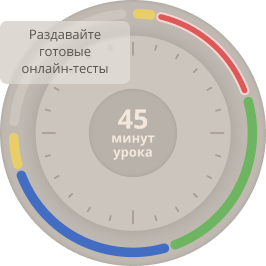Просмотр содержимого документа
«Презентация "Machine language"»
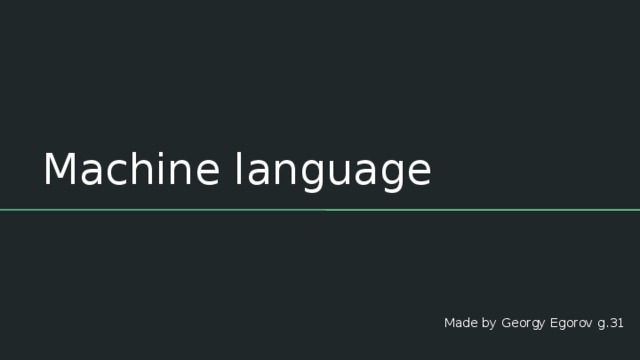
Machine language
Made by Georgy Egorov g.31

Evolution of programming languages.
Initially process of programming provided for recording by the programmer of all algorithms directly in the machine language. This approach aggravated difficult task development of algorithms. Programmers were are forced to memorize a lot of codes in their memory. Programming on machine code is a complex and time-consuming process, often leading to errors that are necessary discovered and corrected before work.

The first step towards the facilitation of the task programming was a refusal to use figures for records commands and operands directly in the form in which they used in the machine. Programmers have become use the mnemonic notation for writing a program, and only when the program was completely composed - they started translate them into machine code.

Low-level programming languages.
Low-level programming language - language programming, close to programming directly at machine codes of the real or virtual processor. For designations machine teams usually applies mnemonic designation. it allows memorize commands not at view sequences of binary zeros and ones, but at view meaningful abbreviations words human language (usually English).

At first programmers used mnemonic designations at development of programs on paper, and then translated them into machine language. However, it soon became clear that such a translation can be performed by the machine itself. AT result were worked out programs, intended for translation recorded at mnemonic type of programs in the machine language. So there were not quite yet perfect languages programming of the second generation.
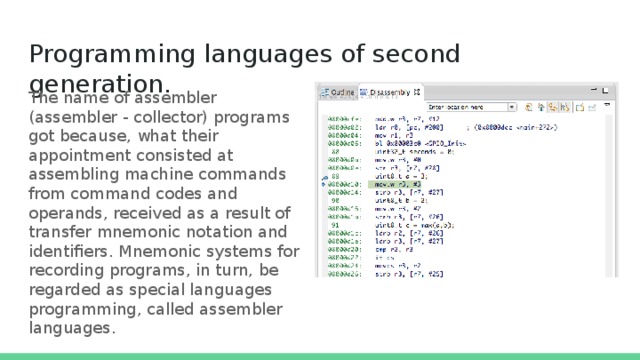
Programming languages of second generation.
The name of assembler (assembler - collector) programs got because, what their appointment consisted at assembling machine commands from command codes and operands, received as a result of transfer mnemonic notation and identifiers. Mnemonic systems for recording programs, in turn, be regarded as special languages programming, called assembler languages.
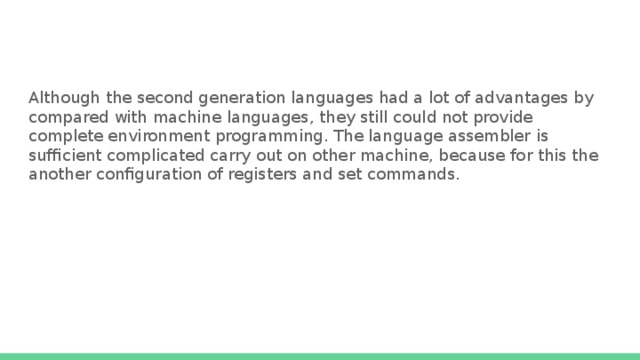
Although the second generation languages had a lot of advantages by compared with machine languages, they still could not provide complete environment programming. The language assembler is sufficient complicated carry out on other machine, because for this the another configuration of registers and set commands.
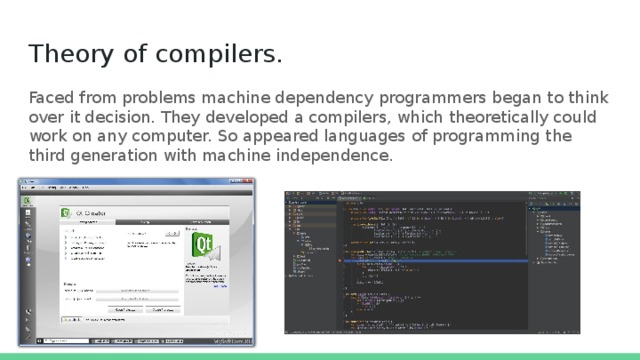
Theory of compilers.
Faced from problems machine dependency programmers began to think over it decision. They developed a compilers, which theoretically could work on any computer. So appeared languages of programming the third generation with machine independence.
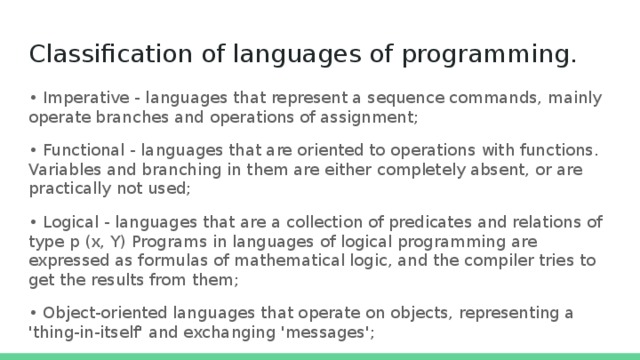
Classification of languages of programming.
• Imperative - languages that represent a sequence commands, mainly operate branches and operations of assignment;
• Functional - languages that are oriented to operations with functions. Variables and branching in them are either completely absent, or are practically not used;
• Logical - languages that are a collection of predicates and relations of type p (x, Y) Programs in languages of logical programming are expressed as formulas of mathematical logic, and the compiler tries to get the results from them;
• Object-oriented languages that operate on objects, representing a 'thing-in-itself' and exchanging 'messages';
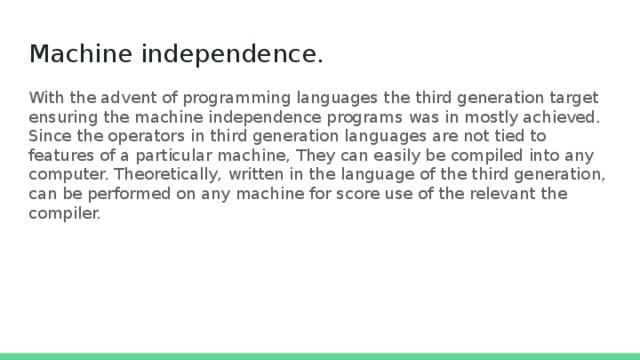
Machine independence.
With the advent of programming languages the third generation target ensuring the machine independence programs was in mostly achieved. Since the operators in third generation languages are not tied to features of a particular machine, They can easily be compiled into any computer. Theoretically, written in the language of the third generation, can be performed on any machine for score use of the relevant the compiler.

The problem of transferring programs from one machine to another is the lack of a common point of view on what exactly is considered the standard of this programming language. In connection with these the American National Standards Institute (ANSI) and the International Organization on standardization (ISO) have adopted and published standards for many popular languages programming. In other cases, informal standards are a consequence of the popularity of a particular dialect of the language, as well as the desires of many developers of compilers to create products that are compatible with others like them.

Thanks for watching!


